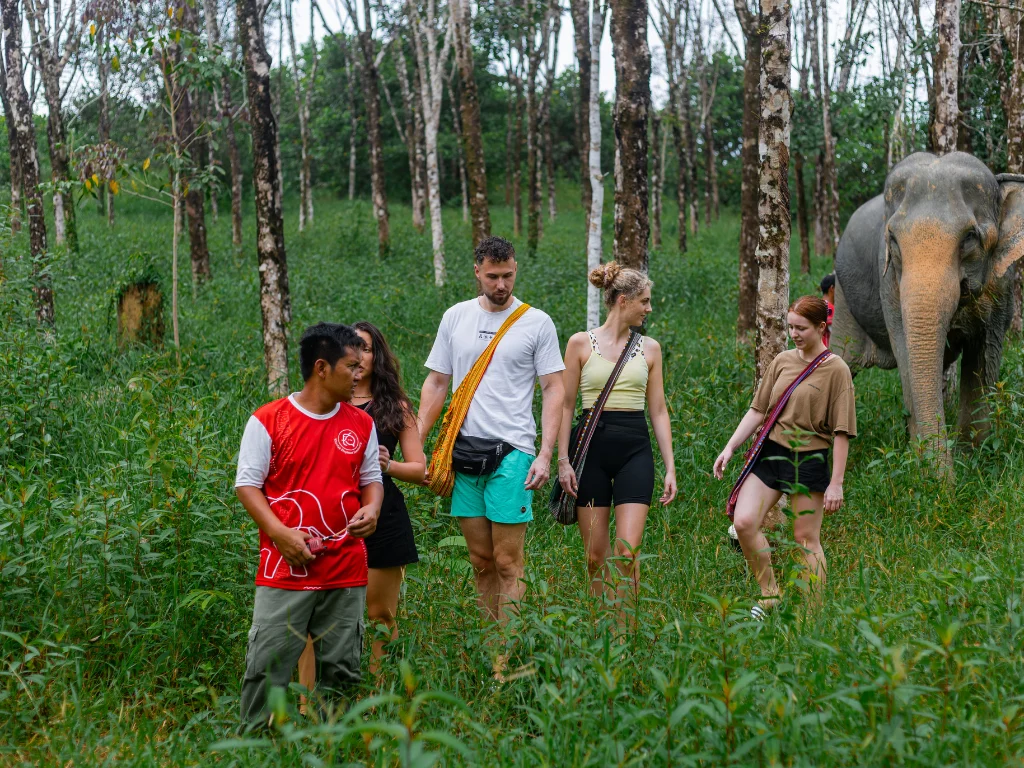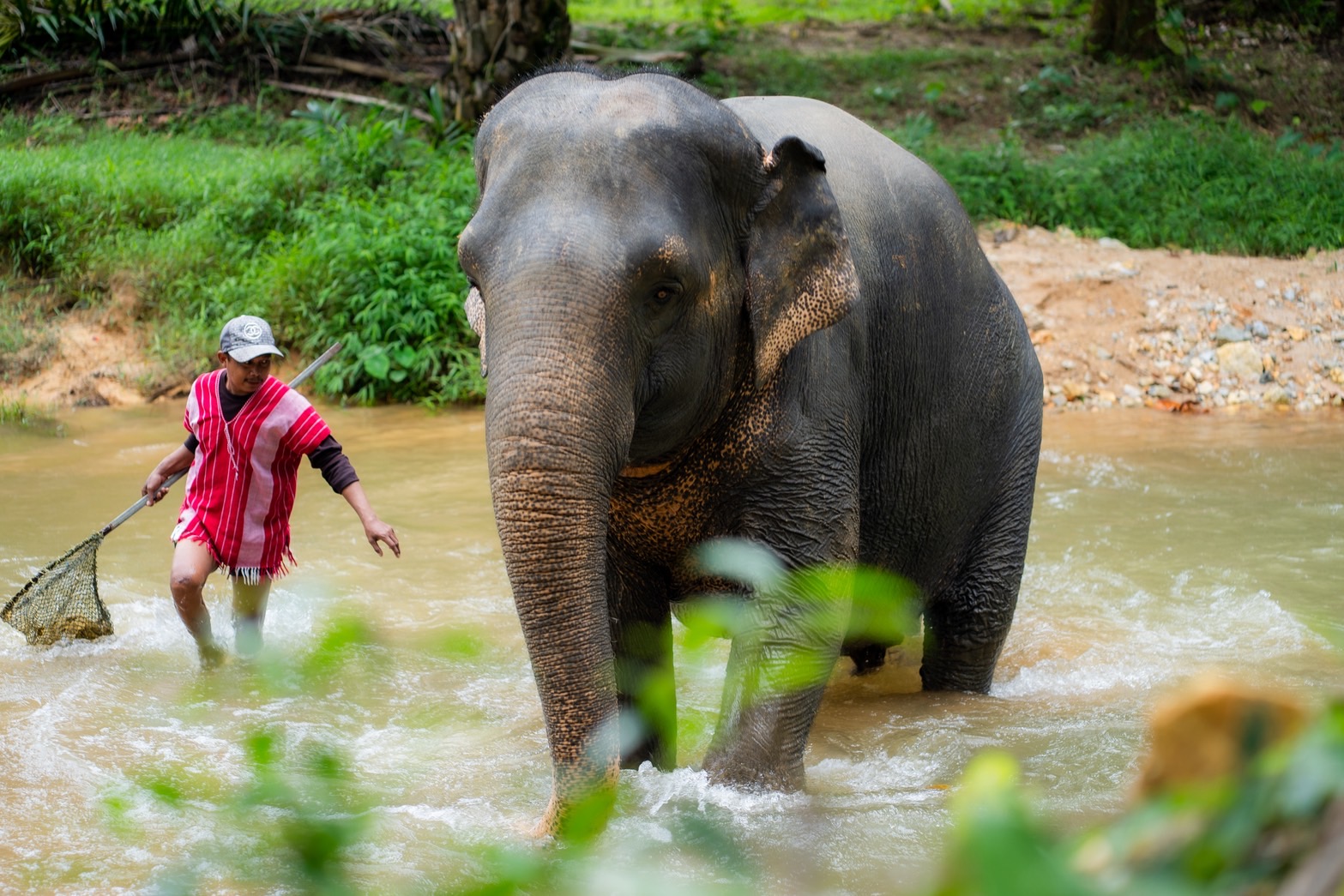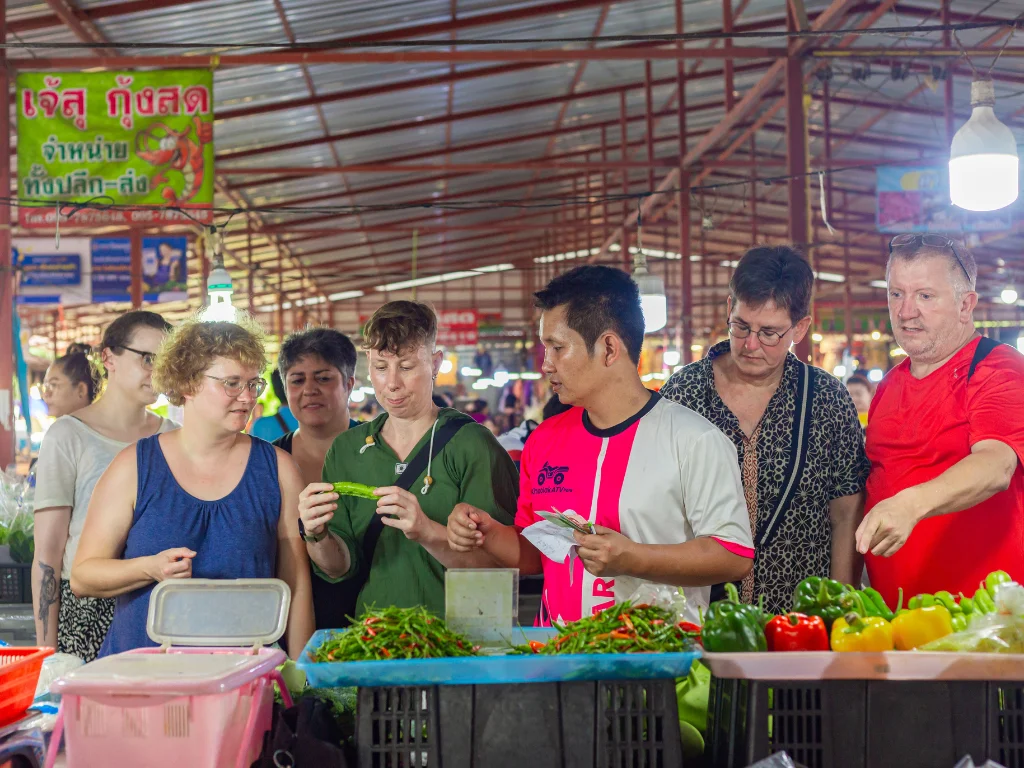Top 6 Things to Do at an Ethical Elephant Sanctuary in Khao Lak
Slow travel, quiet moments, and a front-row seat to dignity and freedom.
Visiting an elephant sanctuary in southern Thailand isn’t another box to tick — it’s a chance to slow down and see lives recovering in real time. In Khao Lak, far from the circus lights, elephants move on their own terms. You’re not there to entertain or be entertained. You’re there to pay attention.
These six experiences became the spine of my day — simple, humane, and hard to forget.
-

Forest paths, bamboo rustle, the soft rhythm of heavy footsteps. 1) Walking Beside Giants Book Now
No hooks, no commands — just following at a respectful distance. You fall into their pace and notice the small things: an ear flick, a trunk brushing leaves, a low rumble that feels more than sound.
-

Tamarind, bananas, salt, rice husk — simple fuel mixed with care. 2) Preparing Elephant Snacks Book Now
Hands dusty with rice husk, the sweet-sour of tamarind on the air. It’s a small, practical way to help — and a quick lesson in what healthy elephant diets actually look like.
-

Guides translate body language: comfort, curiosity, calm. 3) Watching Elephant Behavior Up Close Book Now
With a good guide, shyness, confidence, and friendship become visible. You learn to read posture and movement — and to give space when the elephants ask for it.
-

Afternoon heat fades at the river — water as play and therapy. 4) River Moments Book Now
Sometimes there’s splashing. Sometimes there’s stillness. Either way, the river feels like a reset button — for elephants and for anyone watching from the bank.
-

Scars tell history. The present tense tells recovery. 5) Listening to the Stories Book Now
Logging camps. Trekking circuits. Long roads out. Hearing what each elephant survived changes how you look at them — not as attractions, but as individuals with history.
-

After the forest — lemongrass, chilies, a wok singing at dusk. 6) Cooking Class & Market Visit Book Now
Markets teach you a place through smell and color. Back in the kitchen, recipes from southern Thailand bring the day full circle — wildlife, landscapes, and the people who call Khao Lak home.
Ethical sanctuaries don’t ask elephants to perform. They ask us to pay attention. Leave with more questions than you arrived with — and with a quieter kind of joy.